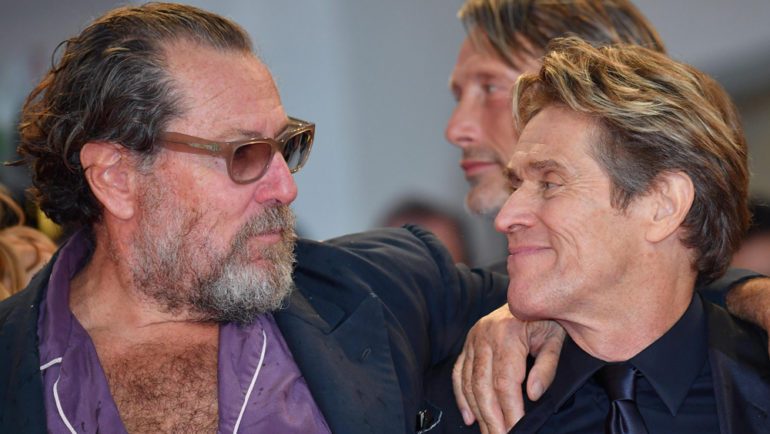Julian Schnabel on Doing Some van Gogh Paintings Himself for ‘At Eternity’s Gate’
By Nick Vivarelli
LOS ANGELES (Variety.com) – Julian Schnabel’s portrait of Vincent van Gogh’s artistically illuminated but mentally dark final period, “At Eternity’s Gate,” opened the Marrakech Film Festival on Friday. The artist and director spoke to Variety about making this movie about a painter that intends to be stand-out in the genre.
You’ve directed a film about a painter before — “Basquiat” — but this one’s a lot more about painting and, as Venice director Alberto Barbera has said, it “gets into van Gogh’s head.” Is that something you set out to do?
I [initially] didn’t want to make a movie about van Gogh….It had been insistently proposed to me, but the script was full of cliches, and I just thought it was a burden. Then the idea came to me that one way to do it would be to look at Van Gogh’s paintings; the feeling you get each time you see one, and then accumulatively when you walk out of seeing lots of them.
It was very important to me to not make a biography. I know more than most people know about painting because I spent most of my life thinking about it, looking at it, and doing it. So this opened up possibilities: how did he make those paintings? How do you do that? How far away from society did he have to get in order to do that? And how much did he need nature?
The film immerses the viewer in Van Gogh’s interiority with some bold narrative and visual devices, such as the screen going black at times when the monologue continues. What’s the exact purpose of that?
The way that the black functions…I think it’s like when you wake up in the morning and you have these thoughts before you say anything…they are absolutely vivid, but it’s totally done in silence. I feel like the viewer in the movie theatre can experience that. The black works as stoppages to where you think: ‘why is it black now?’ And when you come back into the film there is a sort of Jacob’s Ladder effect.
In terms of the visuals things get blurry at times, which enhances the film’s first-person point-of-view. How did you decide to do that?
I had walked out of store selling vintage things. I bought these sunglasses that were bi-focals and when I looked at the grass and it looked like there was a different depth of field I thought this could be Vincent’s perspective. So I gave Benoit [dp Benoit Delhomme] my glasses and I said: ‘put that on the lenses’! We made a split diopter to mimic that so one could have a sense of really being inside of him when he got upset. So there is a variation…between when we use a regular lense and when we do that.
How did you work with Willem Dafoe on getting him to paint believably onscreen?
I’ve known Willem for so long, so I would just tell him how he needed to hold his brush. Also I would give him directions during the shoot. I would say to him: ‘Ok, take that white and go like this!’
Did you paint any of the stuff that’s onscreen?
Yes. For example when Willem is drawing, sometimes my arm is in one sleeve of his shirt…luckily Willem’s hands and mine look pretty similar. I also did the painting he’s doing outside when he’s doing the landscape. The art department sent this painting that was absolutely unacceptable. I painted something in 20 minutes just to make it look viable. I would just stand there and I would be painting. The paintings on the wall, for example, the [famous] self-portrait with the pipe. I needed to paint it so it looked like Willem as van Gogh, but it also had to look pretty much like the original painting, and so I made a couple of those. And also the Gaugain painting that’s on the wall, I painted Oscar Isaac as Gauguin!

